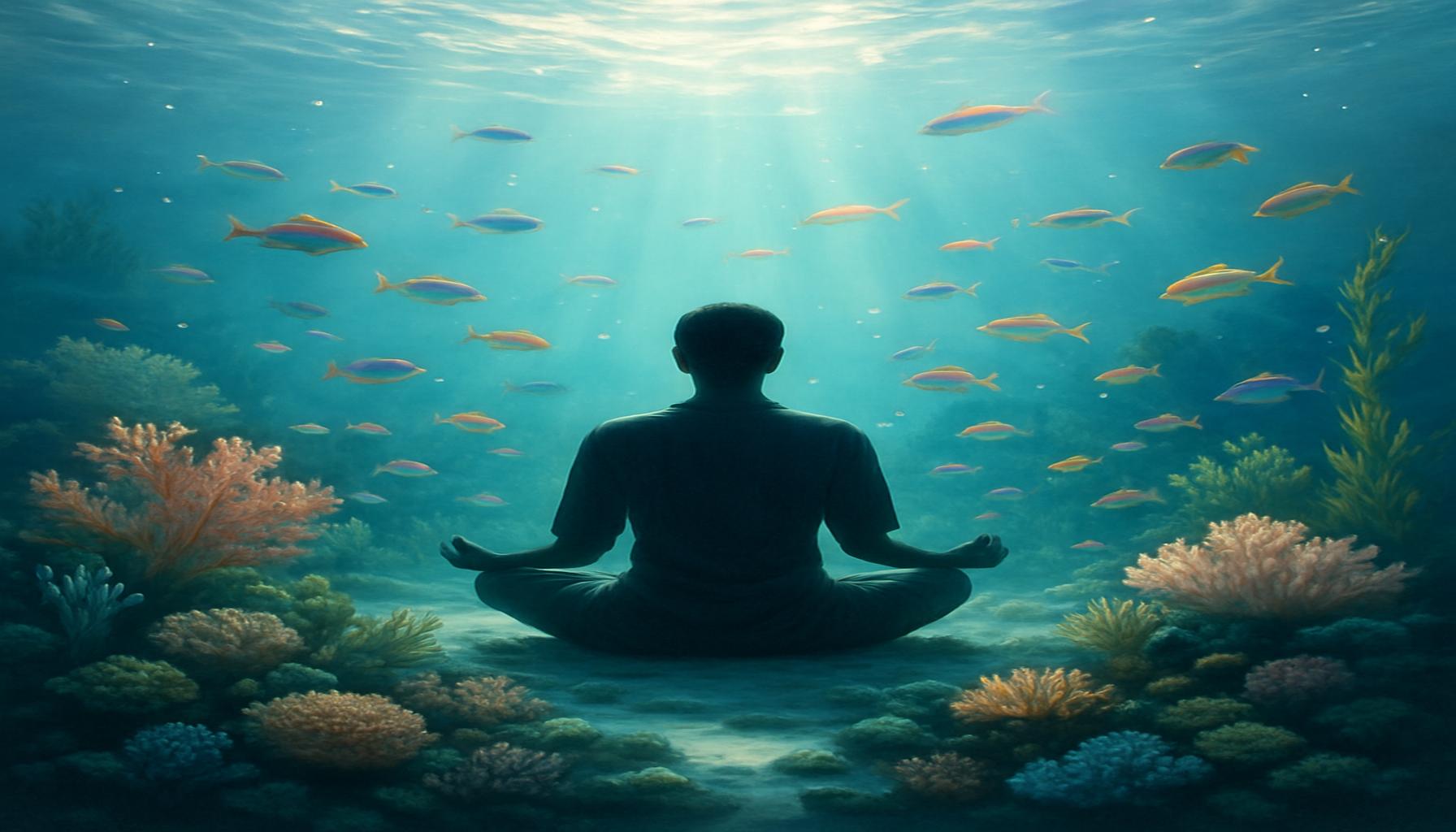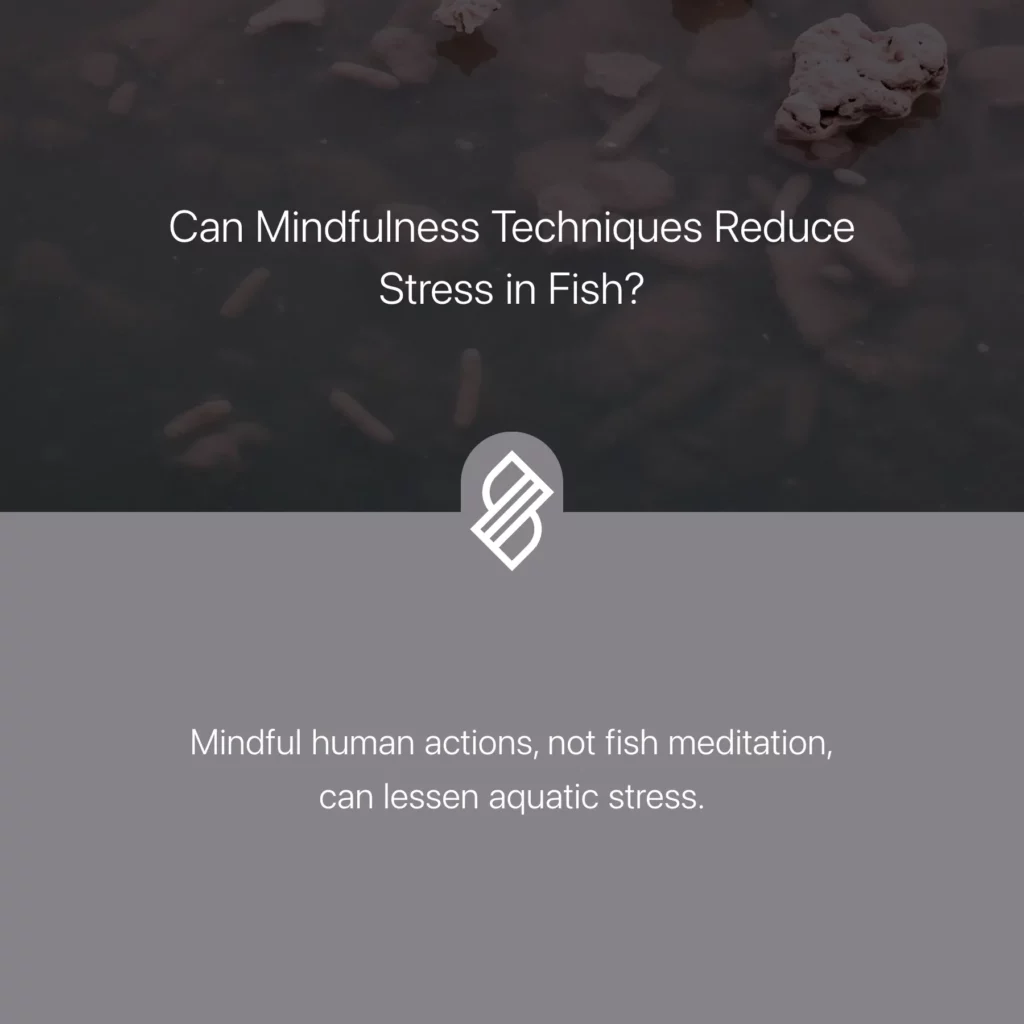Meditating Under Water: Creating a Sensory Environment for Meditation Practice

Anúncios
Explore a Unique Meditation Experience
Imagine immersing yourself in a world where tranquility reigns, and the sound of your breath is the only thing breaking the surface. Meditating underwater offers a distinctive sensory environment that enhances mindfulness and rejuvenation. By connecting with the elements of water, practitioners are able to deepen their meditation practice in ways traditional settings cannot. The gentle flow of water around you can bring about an unparalleled sense of calm, provoking users to explore the depths of their own minds.
Anúncios
Benefits of Underwater Meditation
Diving into the depths of underwater meditation provides various benefits, including:
- Enhanced Relaxation: The buoyancy of water soothes the body, relieving tension in muscles and alleviating stress. When submerged, the experience of weightlessness can produce a liberating effect, allowing participants to let go of their daily worries.
- Mindful Awareness: Surrounding yourself with water encourages a heightened focus on inner peace. The rhythm of your breath as it interacts with the water creates a meditative state that’s conducive to self-reflection, promoting clarity and mindfulness.
- Sensory Isolation: Underwater silence promotes a unique meditation experience, free from external distractions. The muffled sounds that penetrate the water can enhance your connection to your breath, forming a harmonious dialogue between the spirit and the environment.
At its core, this practice transforms the way you engage with your surroundings and yourself. Consider the possibilities: how does the cool embrace of water affect your mind? What new insights could you uncover when submerged in introspection and serenity? Studies have shown that the act of meditative engagement while underwater can lead to reduced anxiety levels and increased emotional stability, making it an appealing practice for many individuals.
Anúncios
Ready to Dive In?
With the right approach, anyone can create their own underwater meditation oasis. Whether it’s in a serene pool, a calm lake, or even the ocean, the potential for personal growth and mindfulness exists beyond the water’s surface. Imagine the tranquil waters of Lake Tahoe, often considered a hidden gem for meditation, where the transparency of the water and stunning surroundings foster a peaceful atmosphere. Alternatively, ocean environments like those found along the Pacific coast offer vast spaces for exploration, allowing practitioners to connect with marine life while diving deep into their own consciousness.
Join us as we explore techniques, environments, and tips for cultivating an extraordinary meditation practice underwater. Consider starting with simple breathing exercises while floating or submerging your body completely to enhance the sensation. Using guided meditations designed for aquatic settings can further aid in personalizing your experience. With the richness of underwater meditation waiting to be discovered, the journey promises to be as profound as the depths you explore.

DISCOVER MORE: Click here to dive deeper
Diving Deeper into Mindfulness
Underwater meditation is not just about finding a quiet spot to float; it’s about engaging all five senses in a unique aquatic setting. This practice allows individuals to transcend the limitations of traditional meditation, effectively elevating their mindfulness journeys. By enhancing sensory experiences, underwater meditation encourages profound reflections and insights. The combination of water’s embrace and the transformative power of breath can transport practitioners into a serene state, merging the physical and metaphysical realms.
Key Techniques for Underwater Meditation
To successfully harness the benefits of meditating underwater, individuals can implement various techniques that cater to their environment and personal preferences. Here are a few methods to consider:
- Focused Breathing: Begin your session by practicing deep, controlled inhalations, followed by slow, deliberate exhalations. This practice heightens awareness of your breath’s connection to the water, allowing thoughts to gently drift away. The sound and sensations produced by the water can enhance this focus.
- Visualizations: Utilize your surroundings to create vivid mental imagery. Picture the water enveloping you as you visualize being surrounded by calming ocean waves or serene lake reflections. This technique can transport you to conducive mental spaces, fostering relaxation and tranquility.
- Body Scanning: As you float or submerge yourself, consciously relax each part of your body, starting from your toes and moving up to your head. Recognizing tension pockets while submerged can intensify the sense of weightlessness, allowing for deeper release and peace.
By incorporating these techniques into your routine, the physical sensations within the water can become powerful meditative tools. The interaction between your body and the water environment fosters an intuitive awareness that is often missing in standard meditation practices.
Creating Your Ideal Underwater Space
The beauty of underwater meditation lies in its accessibility. Whether you choose a tranquil pool, a secluded hot spring, or a clear lake, each environment provides unique opportunities for reflection. Consider a warm, still pool in your backyard adorned with plants that add a touch of nature. Fresh, organic scents can stimulate the senses and elevate the overall experience. Alternatively, natural bodies of water, like the Caribbean’s crystal-clear oceans, offer expansive spaces enriching your underwater meditation with the rhythm of waves and the whisper of marine life.
As you contemplate your ideal underwater sanctuary, the goal is to create an environment that resonates with your personal values and meditation objectives. This personalized approach establishes a strong foundation for a practice that nurtures your mind, body, and spirit, enabling deeper exploration into your inner narrative.
| Advantage | Description |
|---|---|
| Enhanced Relaxation | Immersing yourself in water creates a soothing environment, reducing stress and anxiety, leading to deeper states of relaxation. |
| Sensory Immersion | The unique properties of water enhance sensory experiences, allowing for heightened awareness and connection to the meditative process. |
| Physical Benefits | Water buoyancy helps relieve physical tension and promotes easier and more grounded meditation postures. |
| Mind-Body Connection | The tranquil aquatic environment fosters a stronger mind-body connection, enhancing overall meditation practice. |
Underwater meditation is not just an activity; it is an experience that taps into the primal connection humans have with water. The subtle properties of water can help in achieving a meditative state that is often more elusive on dry land. This method can also support various meditation styles, from mindfulness to guided imagery, making it a versatile practice suitable for all levels. Engaging with this unique sensory environment can also quicken the journey to higher levels of consciousness, providing insights that may remain hidden in your regular practice. Imagine a meditative experience enriched by the gentle caress of water and the sounds it offers, all contributing to a profound journey within. Meditating underwater can lead to significant personal growth, encouraging practitioners to explore deeper realms of their consciousness while enjoying the physical benefits that come with being immersed in water. It invites a plethora of sensations and emotions, offering an unparalleled meditation experience that many seek yet seldom find.
Dive deeper into wellness: Click here to discover more
Enhancing the Underwater Experience with Technology
As underwater meditation continues to gain popularity, technology plays a pivotal role in enhancing this unique practice. Wearable devices, such as waterproof fitness trackers and heart rate monitors, can provide real-time feedback, helping practitioners understand their physiological responses during meditation. This data opens up avenues for personal growth, allowing individuals to map their emotional and physical states as they dive into deeper mindfulness.
Underwater Music and Soundscapes
To enrich the sensory experience, consider incorporating underwater music or pre-recorded soundscapes. Wired waterproof headphones can transport soothing melodies or nature sounds directly to you, creating a harmonious backdrop that complements the ebb and flow of your meditation. Research has shown that sound has a significant impact on a person’s emotional state. For instance, listening to calming music can stimulate the release of dopamine, fostering a stronger sense of relaxation and contentment.
Light and Color Therapy
Another innovative way to enhance your underwater meditation is through the use of light and color therapy. Submersible LED lights that shift in color can create a calming atmosphere as they reflect off the water surface. This dynamic play of light not only captivates the eye but also plays a role in regulating emotions. For example, blue light is known to promote a sense of calm and tranquility, while warmer hues can invigorate and energize the spirit. By consciously integrating these color therapies, practitioners can optimize their meditation space, aligning their internal states with external stimuli.
Mindful Movements in Water
Incorporating gentle movements while meditating underwater can also elevate the experience. Practices such as Tai Chi or Qigong can be adapted to the water environment, providing a dual benefit of meditation alongside physical exercise. The resistance of water enhances physical movements, allowing for a more profound awareness of body mechanics and emotional release. As you gracefully move through the water, the natural buoyancy provides support, enabling you to explore and cultivate mindfulness in a way that feels safe and freeing.
Emphasizing Safety in Underwater Meditation
While exploring underwater meditation, it is essential to prioritize safety. Always practice in safe conditions, using the buddy system for additional support. Familiarize yourself with any potential uncertainties, such as local water currents or temperature fluctuations. Beginners should consider starting in shallow waters where they can easily stand or float. Having a trusted individual nearby can also help mitigate any fears or concerns, enabling a more profound exploration of your meditative practice.
Ultimately, the fusion of technology, environment, and mindful movement creates a robust sensory environment that invites deeper connections to self and nature. Embracing these elements can transform ordinary meditation sessions into extraordinary experiences, propelling practitioners into new dimensions of mindfulness.
DIVE DEEPER: Click here to discover the benefits of meditation in your bath</
Conclusion
In conclusion, meditating underwater offers a transformative approach to mindfulness that intricately weaves together sensory stimulation and natural elements. By engaging with the buoyancy of water, the rhythm of sound, and the dynamic play of light, practitioners can unlock new levels of introspection and relaxation that are often elusive in traditional meditation settings. The incorporation of technology, such as wearable devices, allows individuals to track their physiological responses, providing valuable insights into their meditation practices and enhancing their personal growth journey.
Soundscapes and music create a serene atmosphere, while light and color therapy further enrich the meditative experience, encouraging emotional regulation and fostering a deeper connection to one’s inner self. The integration of gentle movements transforms meditation into a more holistic practice, inviting participants to explore the mind-body connection in an engaging environment.
While the potential benefits of underwater meditation are profound, prioritizing safety remains essential. Practitioners should be mindful of their surroundings and consider their skill levels, ensuring a supportive and secure environment for their explorations. As interest in this practice continues to grow, it invites a broader conversation about the fusion of mindfulness and nature, encouraging individuals to seek innovative ways to reconnect with themselves and the world around them.
As we navigate the depths of our own consciousness through underwater meditation, we may find that the soothing embrace of water not only calms the mind but also nurtures the spirit, leading to profound personal evolution.
Related posts:
How the Bath Environment Can Enhance Meditation
Integrating Mindfulness into Bathing Routine: A Practical Guide for Daily Meditation
The connection between water and meditation: how the shower can be a sacred space
Meditation in the Bath: A Practice of Self-Care and Self-Compassion
Meditation in the Bath for Creativity: Unleashing Ideas and Inspirations Under Water
The Benefits of Bath Meditation for Mental Health

Linda Carter is a writer and meditation guide specializing in mindfulness practices and inner peace. With extensive experience helping individuals cultivate mental clarity and emotional balance, Linda shares her wisdom on our platform. Her goal is to empower readers with practical techniques and mindful strategies to reduce stress, enhance self-awareness, and achieve lasting tranquility in daily life.